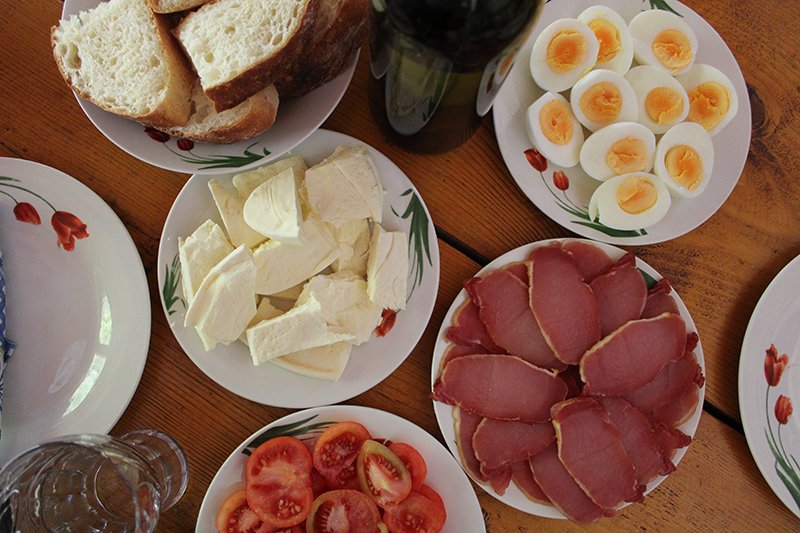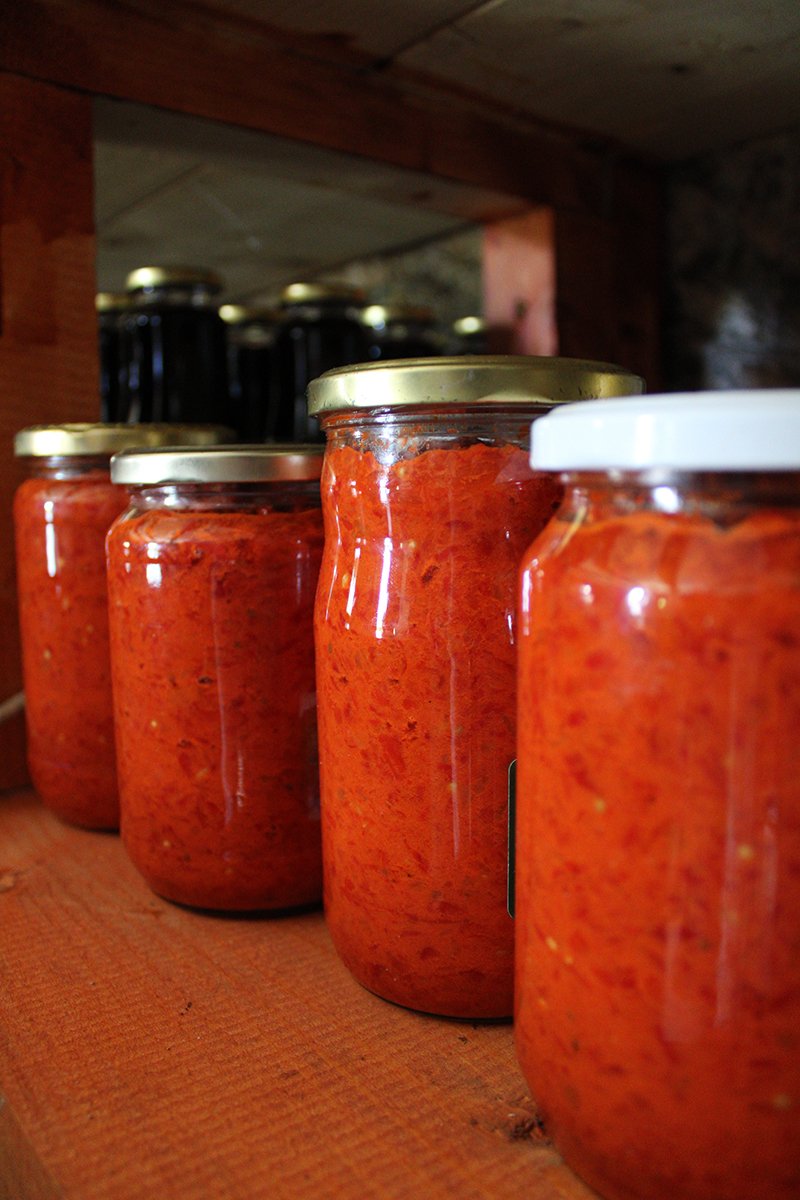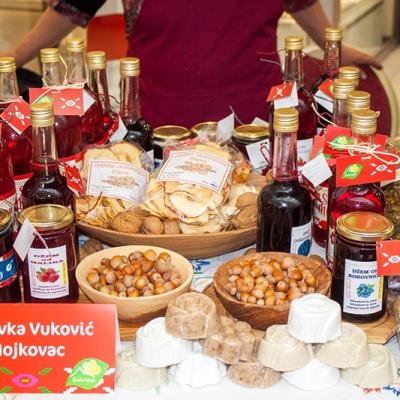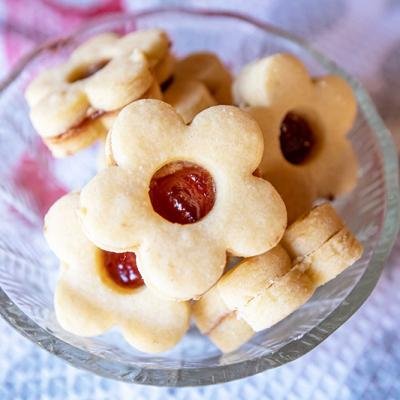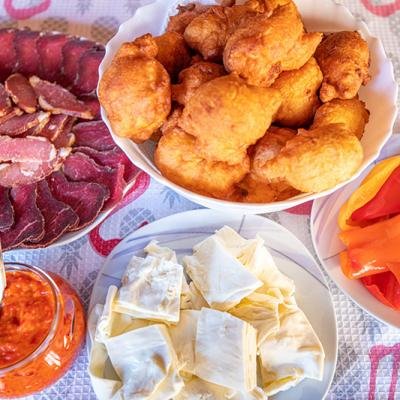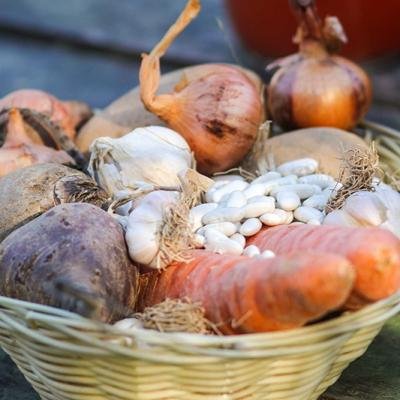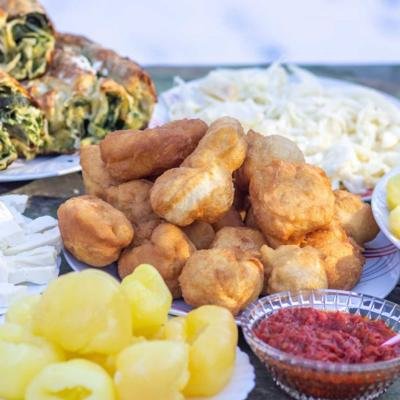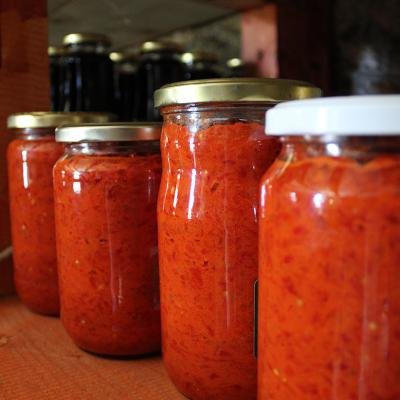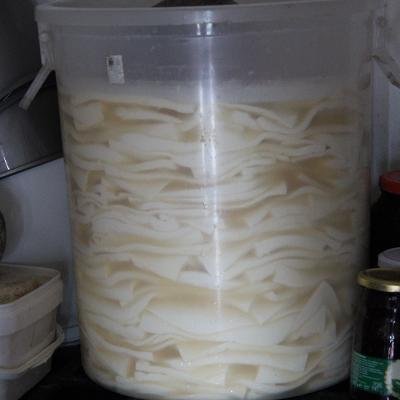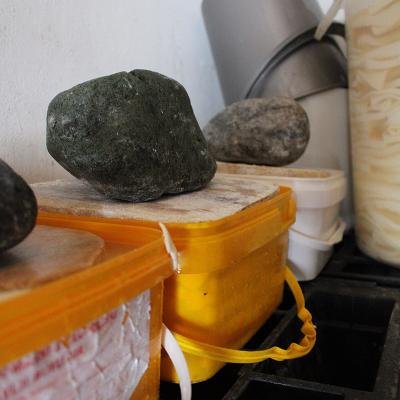Mojkovac cuisine, known for its richness of taste, dates back to the time when the natives of this city lived in the area. All kinds of national and traditional dishes are available in restaurants and hotels throughout the entire territory of the Mojkovac Municipality.
Thanks to the rich pastures of the Sinjajevina, Bjelasica and Prošćenje Mountains, dairy products and meat from the mountains are the main menu items of Mojkovac restaurateurs. It is inevitable to try the lamb under the sač, various game, and grilled trout. The traditional dishes of the mountain table, consisting of kačamak and cicvara, are two dishes that are wonderfully complemented with homemade sour milk. Buckwheat, a dish made from homemade cheese, cream, and buckwheat flour, is indispensable on the menus of national restaurants.
The municipality of Mojkovac is proud of the quality honey that is produced in the mountainous areas of our community. The sweet nectar of various mountain flowers makes the honey from the Bjelasica, Sinjajevina and Prošćenje Mountains significantly healthier and unusually tasty.
In addition to these gastronomic specialties, Mojkovac offers quality homemade brandy and organic juice without additives.
Try our Homemade bread
Making homemade bread is a daily ritual for all housewives in rural areas. Bread is an integral part of every meal, and housewives simply must have sufficient quantities for daily needs, because they are very often far from centers where they can buy ready-made bread. However, if supplies are missing or guests suddenly arrive, skilled housewives will very quickly make a quick bread which is ideal with cheese, cream or whatever else is in the house.
Try our Pie
On tables of the northern region, there are many pastas, above all various pies, which can be both salty and sweet, and are often used as the main dish in the family. Savory pies are mostly made from greens (meadow greens, spinach, Swiss chard, nettles), potatoes, leeks, cheese, and sweet apple pies. Also, there are several ways of preparing pies, so puff pies (stacked and rolled) are most often prepared. A special pie that is known in the northern region, prepared in a different way, is buckwheat pie.
Try our Štitarica Rolled Cheese
The unique taste, special appearance, special production recipe, and excellent nutritional balance of Štitarica rolled cheese will make this product an indispensable ingredient in your diet. This cheese is another in a series of healthy and high-quality foods offered by Mojkovac. Obtained though the traditional method of production from domestic cow's milk, with soft consistency and mild taste, it is one of the most important foods in Montenegro.
Hot water is poured and smoothed by hand until the fine cheese has a glassy appearance all over. Then, like homemade crusts, it is stretched, filled and folded.
Try our Zimnica
Tradition plays a big role in preparing winter food. We get the recipe from our mother, she from her mother, she from hers, and so on. These recipes are tried-and-true, and they are always the best. It's the way we remember childhood and moments of growing up. Just one bite is enough to immediately return there.
The first records of storing food for the winter date back to the Ancient Greeks, who described the method of drying and storing figs. Since then, until today, fruit-drying has remained almost identical, naturally in the sun and wind, with a little help from technology. Over time, other forms of food preparation and storage have also been developed.
If someone gives you a jar of hand-made winter food, know that they appreciate and love you very much,because they put a lot of effort and love into making it. So appreciate such people and such moments as much as you can!
Try our Kačamak
Kačamak is more than a traditional dish. Something in it evokes ancient images of herdsmen, nomads, large herds on expanses of grass, shepherd's huts under the starry sky... The recipe is simple; you need water, flour, potatoes, and cheese, cream, and butter to season it. But kačamak will never be as tasty as the one on some Montenegrin high mountain. The secret is probably in the ingredients; their individual authenticity in the spring water, the fire, and the crisp mountain air.
Kačamak (from the Turkish word kaçamak - porridge) is often prepared in Montenegrin households and served in all restaurants as a traditional dish. In some restaurants in the north of Montenegro, both domestic and foreign guests go only for good kačamak. It is traditionally served on wooden plates. It goes best with thick homemade sour milk.
In the past, it was a favorite "peasant food" - a calorie bomb that farmers needed due to its high energy consumption. It usually takes an hour to prepare kačamak, although the process is simple. Flour is added to the water in which the potatoes are cooked. Finally everything is combined into a single mass by stirring with a wooden spoon. Cream and/or cheese is added for the final taste. The taste of kačamak is influenced by a number of elements: potatoes produced at low altitudes have a special sweetness, and flour made from local varieties of corn ground on a stone is of better quality and tastier. And of course, top quality homemade white cheeses and crusts are irreplaceable. Homemade sour milk is an ideal complement to kačamak.
Try our Priganice
Families in Montenegro in earlier times were mostly large, and several generations lived in the community, or several smaller families with lots of children. One of the best ways to prepare breakfast for a large family was to knead a little more dough for bread, then separate this dough from the rest,, stir it, and finally fry a "hill" of priganica. Today, priganica is the recognizable symbol of Montenegrin cuisine in all its various areas.
There are several types, and the Montenegrin and Zeta ones are characteristic. Depending on the side dish, they can be a salty or sweet, hot or cold appetizer. They go well with cheese or cream, but also with jam and honey. They are served for breakfast and dinner, as well as for welcoming guests. Priganica is mandatory during holidays.
The nuances in the preparation decide whether the balls of yeast dough will be more compact or airy. Montenegrins are made by mixing the dough after rising, and letting it rise again. A glass of brandy can also be added to the dough. Zeta priganica is prepared without yeast (equal amounts of water and milk, beaten eggs and flour are added to make the dough medium thick; the dough is scooped out with a spoon and poured into hot oil). They are very thin, but taste great!
Try our Cicvara
This traditional, tasty, and high-calorie dish has a similar history to kačamak. However, while the most important thing with kačamak is that the mixture of potatoes, flour and crust is well "beaten", which requires strength, preparing cicvara is more a matter of technique and finesse of the housewife. The peasants were happy to eat cicvara to regain strength after a long day. Today it is served in all national restaurants, and it is also enjoyed in households - especially in the countryside. It is prepared by continuously stirring and heating the cream until it completely turns into fat. Then gradually add flour (usually corn) and mix carefully so that it does not stick to the bottom of the pot. Mix the mass until the flour is completely uniform with the cream. Cicvara must be mixed in a circular motion until it stops sticking to the spoon or bowl. When the mixture is uniform, it is brought to the table.






